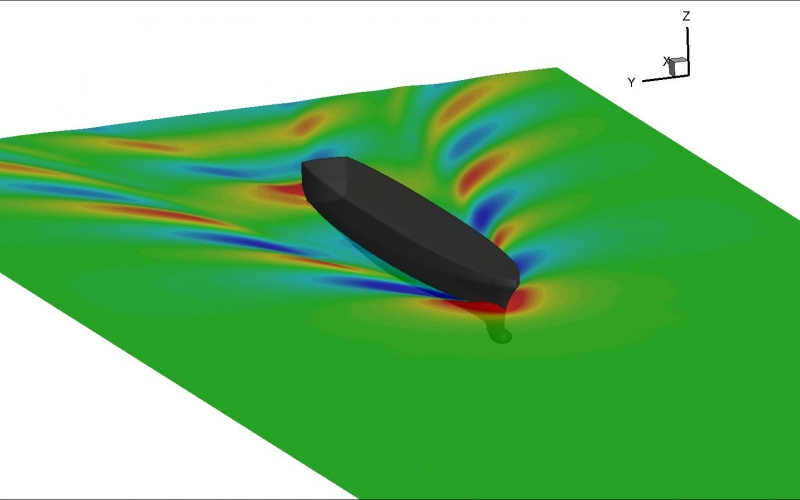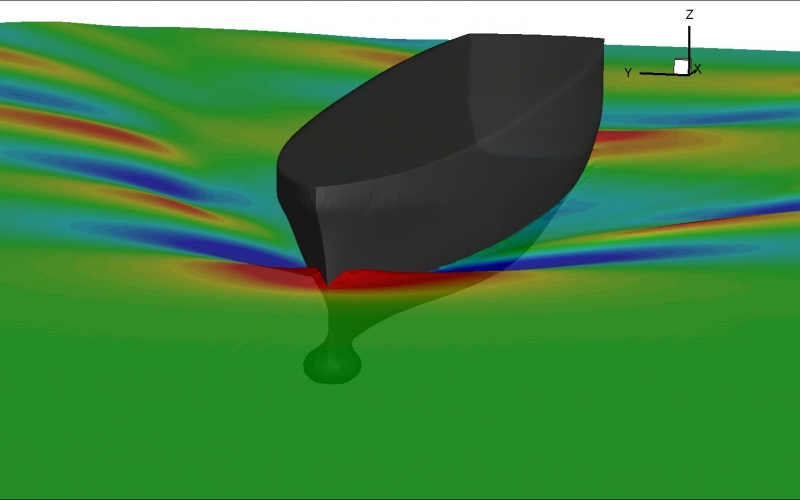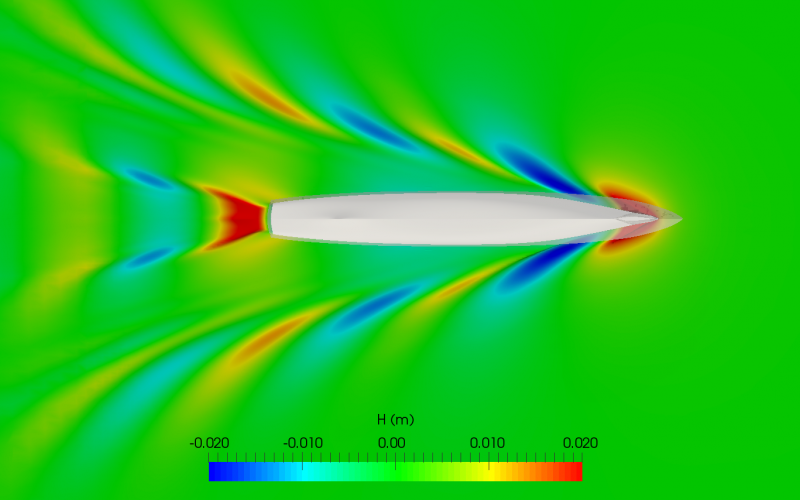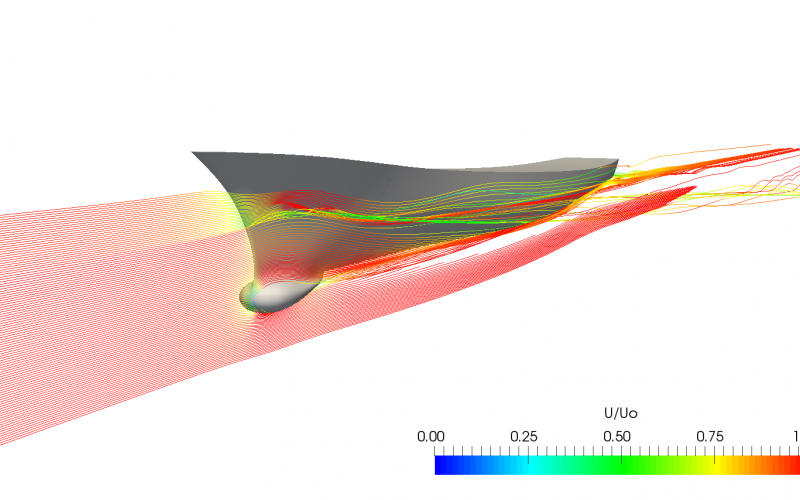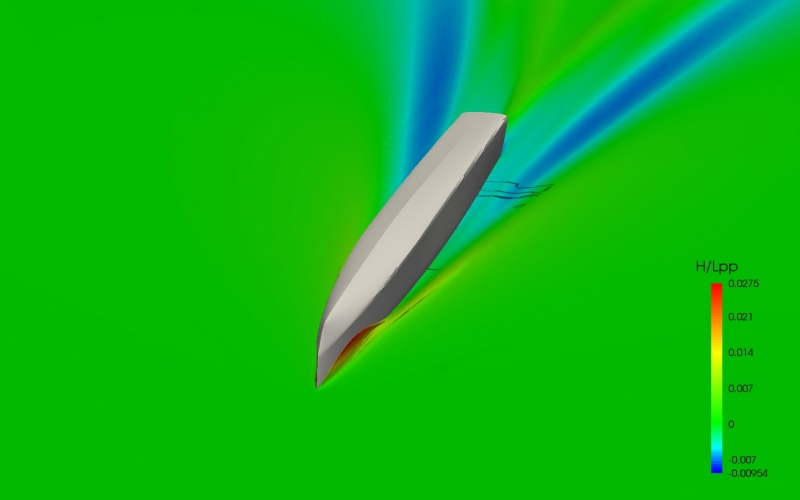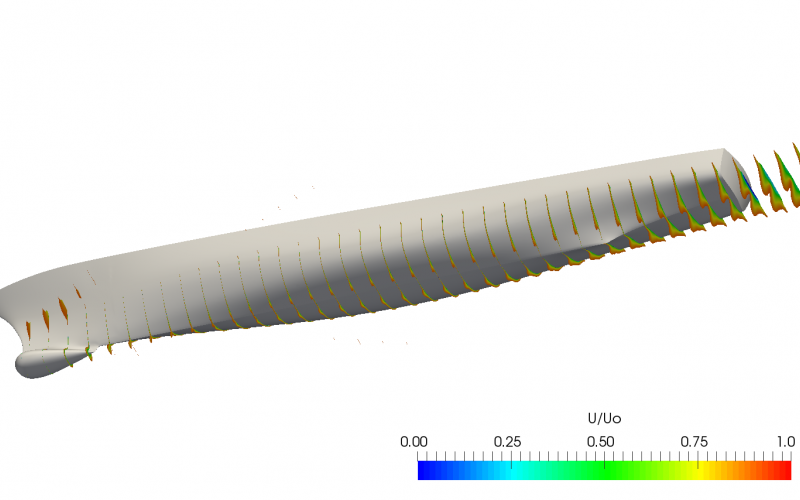Cloud-based simulation of flows around marine structures
Ship transport represents more than 80% of the transport of goods and people around the world. To address the growing demand for shipping, the maritime industry is facing new challenges such as a reduction in fuel consumption and improvements in safety. The design of a new ship is complex, dealing with constraints on stability, velocity, manoeuvrability and structural design. Historically, ship design has evolved slowly and is rather conservative. In the past, experiments on scale models have been carried out, but these are costly and restricted to a few designs. The use of Computational Fluid Dynamics (CFD) provides an alternative way to evaluate a ship’s properties. This kind of simulation, while being very promising, has been restricted to specialised companies because it requires a wide range of skills. It is consequently generally out of scope for shipyards and naval architects to maintain an appropriate multi-skilled team. Furthermore, CFD software licences are also expensive. VPLP is a world-renowned international team of French-based naval architects and designers that has been working worldwide in sail and motor craft for 30 years. It designs some of the world’s most innovative racing trimerans. Their designs presently hold many of the world speed sailing records. VPLP is more and more working with CFD. HydrOcean, a subsidiary of Bureau Veritas, offers support for design in the maritime field. This includes risk assessment, the evaluation and optimisation of marine structures such as ships, drilling platforms, marine renewable energy devices and racing yachts. The availability of Cloud-based-HPC CFD simulations would enable it to extend its current services in a competitive market. The goal of this experiment was to develop and implement an HPC-cloud-based platform based around classical maritime scenarios that are familiar to naval architects. Automatic procedures such as mesh generation, job submission, and post-processing, on cloud-based CPU resources have been developed. This would enable the inexperienced user to optimise the design of ships and other marine structures. The platform would be tested using practical test cases from the end-users VPLP and HydrOcean.
The Challenge
The challenge of this experiment was to make advanced CFD simulation available to end-users via a set of interfaces addressing different properties such as ship resistance and manoeuvrability. Complementary to this, there was a clear need to access a large system for a short period whilst mitigating issues related to software licences. The platform to be developed would automatically make appropriate technical choices regarding the numerical schemes and solvers to be deployed. Finally, an automatic re-meshing capability would be implemented.
The Solution
An HPC-cloud-based CFD platform based around classical maritime scenarios that are familiar to naval architects has been implemented. The features of this platform include the computation of basic hull resistance and hull resistance in oblique flow. These are of primary interest for shipyards in the determination of the power of the engine to be installed on board. Automated pre-processing support includes advanced meshing and automated post-processing support includes 3D views of pressure and velocity fields and other features of interest. Finally, a portal to enable the secure submission of jobs to the HPC platform has been developed. The platform developed allows the calculation of the basic problems encountered in the marine market in a simple manner and it makes CFD simulation accessible to the non-expert user. Such advanced simulations are a real alternative to the use of expensive tests and models.
The Benefits
Through the use of the Cloud-based-HPC CFD platform, NEXTFLOW expects an additional revenue of €215K in the first year, rising to more than €1M in the third year. In the short term, new scenarios will be added to this marine CFD solution, to address the main hydrodynamic problems encountered by the market. In the long term, NEXTFLOW expects a significant part of its revenues will come from cloud solutions, with an estimated annual licence revenue of €500K to €900K per year. Performance optimisation studies carried out by HydrOcean on several kinds of ships show gains ranging from 2% to 10% on fuel consumption as a result of evaluating several hull forms in the design process. The automation of the CFD process will provide gains in efficiency and productivity for optimization studies. This will result in an increase of around 20%, approximately 200 k€ per year, of the related revenue of HydrOcean. HydrOcean is also the software distribution partner of NEXTFLOW Software in the marine sector. The possibility of proposing an online platform for calculation (simple calculations currently, but more complex computations in the future) will increase HydrOcean’s revenues as a reseller. VPLP always try to improve its design, and nowadays RANS calculation has become an effective way to understand what is going on at the flow level. Such a solution allows VPLP to have an easy to use and cheap CFD solution, enabling to use CFD for smaller projects that wouldn't have benefited this kind of simulations by the past. Being an end-user has been a great opportunity to define a tool that matches perfectly expectations during the design process. An extended calculation matrix on a lab boat has been simulated in order to simulate her behaviour dynamically. Thus, this campaign will allow VPLP to understand better how CFD could be used in a Velocity Prediction Program. In the short term, it is expected to conclude a business partnership with the partners of this experiment creating additional software revenues for Distene. In the longer term, Distene expects a significant growth, to which this experiment has contributed, increasing annual licence revenue from €300K to €750K. Based on NEXTFLOW projections for HPC compute time requirements over the next 3 years, Bull anticipates revenues of respectively 50K€, 110K€ and 250K€.
Companies Involved
End-users: HydrOcean and VPLP
ISV: Distene and NEXTFLOW
Software HPC Provider: BULL


